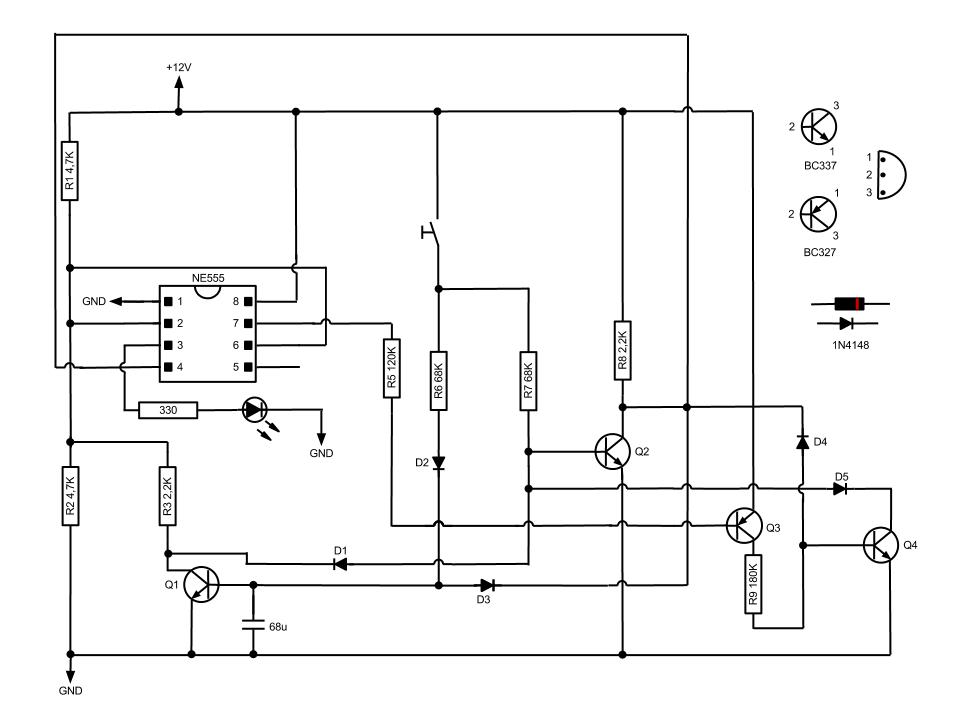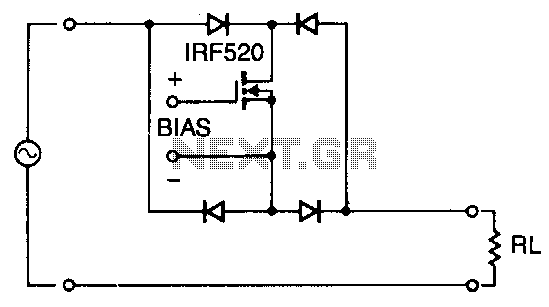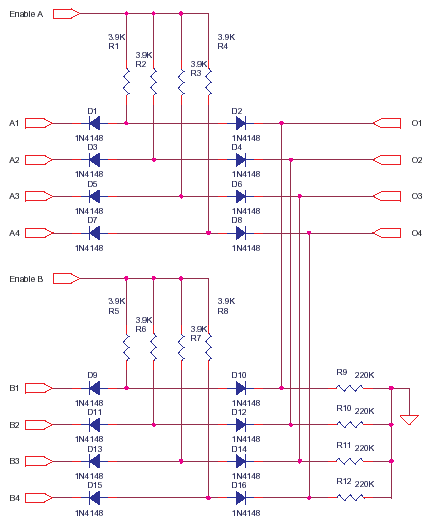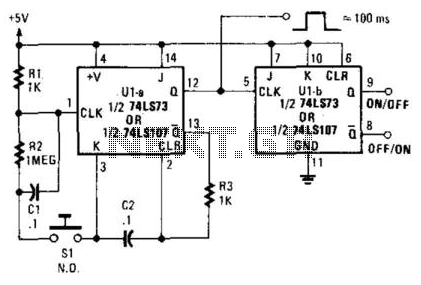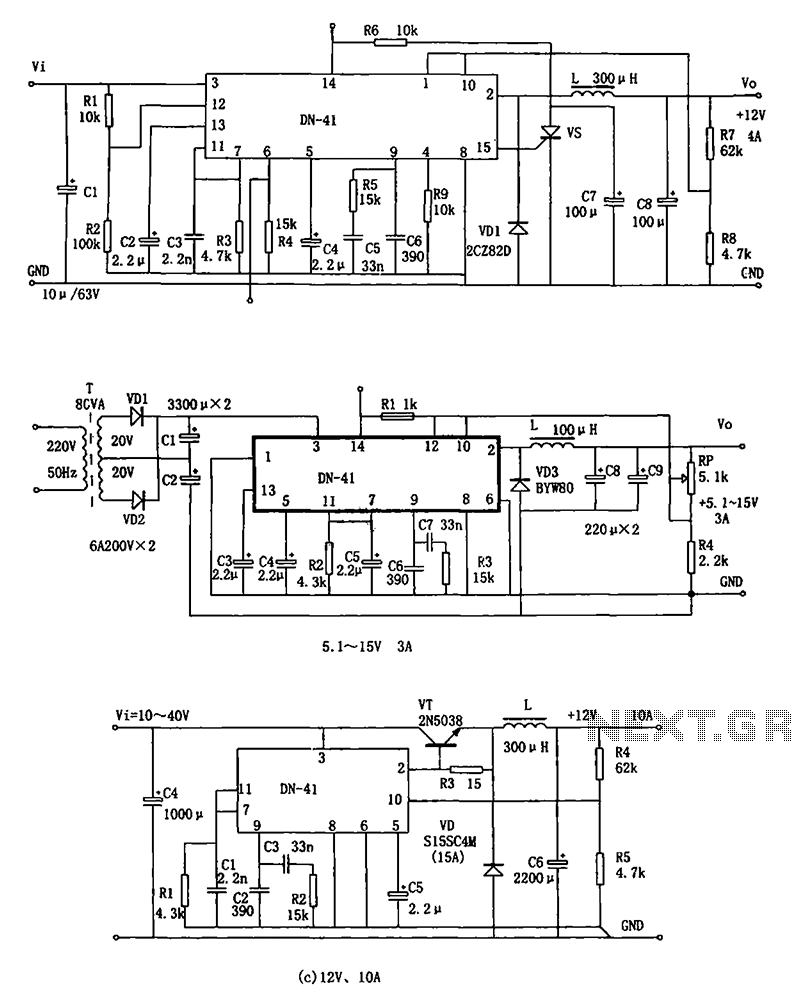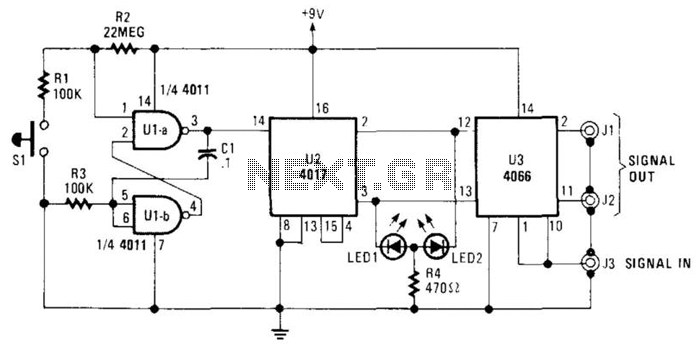
Touch switch
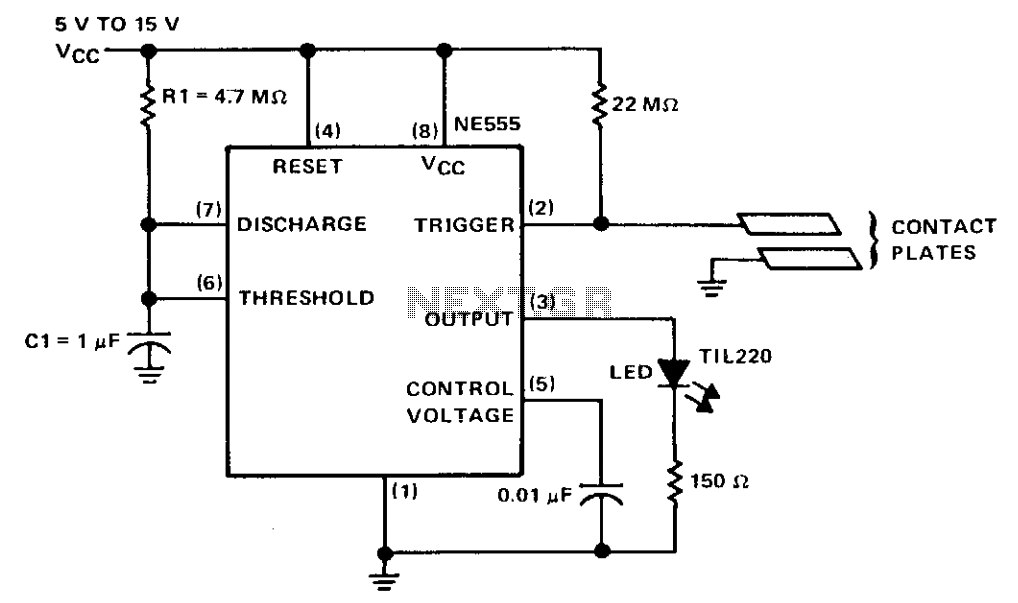
The circuit consists of a NE555 monostable timer, with a unique triggering method. The trigger input is held at a high voltage level by a 22-ohm resistor. When the contact plates are engaged, the operator's skin resistance decreases the total impedance from pin 2 to ground. This change lowers the voltage at the trigger input below the 16 Vcc threshold, initiating the timer. The output pulse width is calculated using the formula 1.1 R1C1, resulting in an approximate duration of 5 seconds. A relay can be connected from pin 3 to ground in place of the LED and resistor to perform a switching function.
The NE555 timer in monostable mode is designed to produce a single output pulse of a specified duration in response to a triggering event. In this configuration, the timer is activated by a momentary low signal at the trigger input (pin 2), which is normally held high by the 22-ohm resistor. The value of the resistor is critical as it establishes the baseline voltage level for the triggering condition.
When the operator touches the contact plates, the lower skin resistance effectively decreases the impedance, allowing the voltage at pin 2 to drop below the threshold level required to trigger the timer. This action activates the internal timing mechanism, causing the output at pin 3 to go high for a duration defined by the time constant, which is determined by the resistor (R1) and capacitor (C1) connected to the circuit.
The output pulse width, calculated as 1.1 times the product of R1 and C1, is set to approximately 5 seconds in this design. This time period can be adjusted by changing the values of R1 and C1, allowing for flexibility in the operation of the circuit.
In applications where a relay is preferred, the output from pin 3 can be connected to a relay instead of the standard LED and resistor configuration. This modification allows the circuit to control higher power loads or perform switching functions in various electronic applications. The relay will be activated for the duration of the output pulse, providing a practical means to control devices such as lights, motors, or other electrical components.
Overall, this NE555 monostable timer circuit provides a reliable solution for generating timed output pulses, with user-friendly triggering and versatile output options.The circuit is basically a NE555 monostable, the only major difference being its method of triggering. The trigger input is biased to a high value by the 22 ohm resistor. When the contact plates are touched, the skin resistance of the operator will lower the overall impedance from pin 2 to ground.
This action will reduce the voltage at the trigger input to below the 16 Vcc trigger threshold and the timer will start. The output pulse width will be = 1.1 R1C1, in this circuit about 5 seconds. A relay connected from pin 3 to ground instead of the LED and resistor could be used to perform a switching function.
The NE555 timer in monostable mode is designed to produce a single output pulse of a specified duration in response to a triggering event. In this configuration, the timer is activated by a momentary low signal at the trigger input (pin 2), which is normally held high by the 22-ohm resistor. The value of the resistor is critical as it establishes the baseline voltage level for the triggering condition.
When the operator touches the contact plates, the lower skin resistance effectively decreases the impedance, allowing the voltage at pin 2 to drop below the threshold level required to trigger the timer. This action activates the internal timing mechanism, causing the output at pin 3 to go high for a duration defined by the time constant, which is determined by the resistor (R1) and capacitor (C1) connected to the circuit.
The output pulse width, calculated as 1.1 times the product of R1 and C1, is set to approximately 5 seconds in this design. This time period can be adjusted by changing the values of R1 and C1, allowing for flexibility in the operation of the circuit.
In applications where a relay is preferred, the output from pin 3 can be connected to a relay instead of the standard LED and resistor configuration. This modification allows the circuit to control higher power loads or perform switching functions in various electronic applications. The relay will be activated for the duration of the output pulse, providing a practical means to control devices such as lights, motors, or other electrical components.
Overall, this NE555 monostable timer circuit provides a reliable solution for generating timed output pulses, with user-friendly triggering and versatile output options.The circuit is basically a NE555 monostable, the only major difference being its method of triggering. The trigger input is biased to a high value by the 22 ohm resistor. When the contact plates are touched, the skin resistance of the operator will lower the overall impedance from pin 2 to ground.
This action will reduce the voltage at the trigger input to below the 16 Vcc trigger threshold and the timer will start. The output pulse width will be = 1.1 R1C1, in this circuit about 5 seconds. A relay connected from pin 3 to ground instead of the LED and resistor could be used to perform a switching function.
